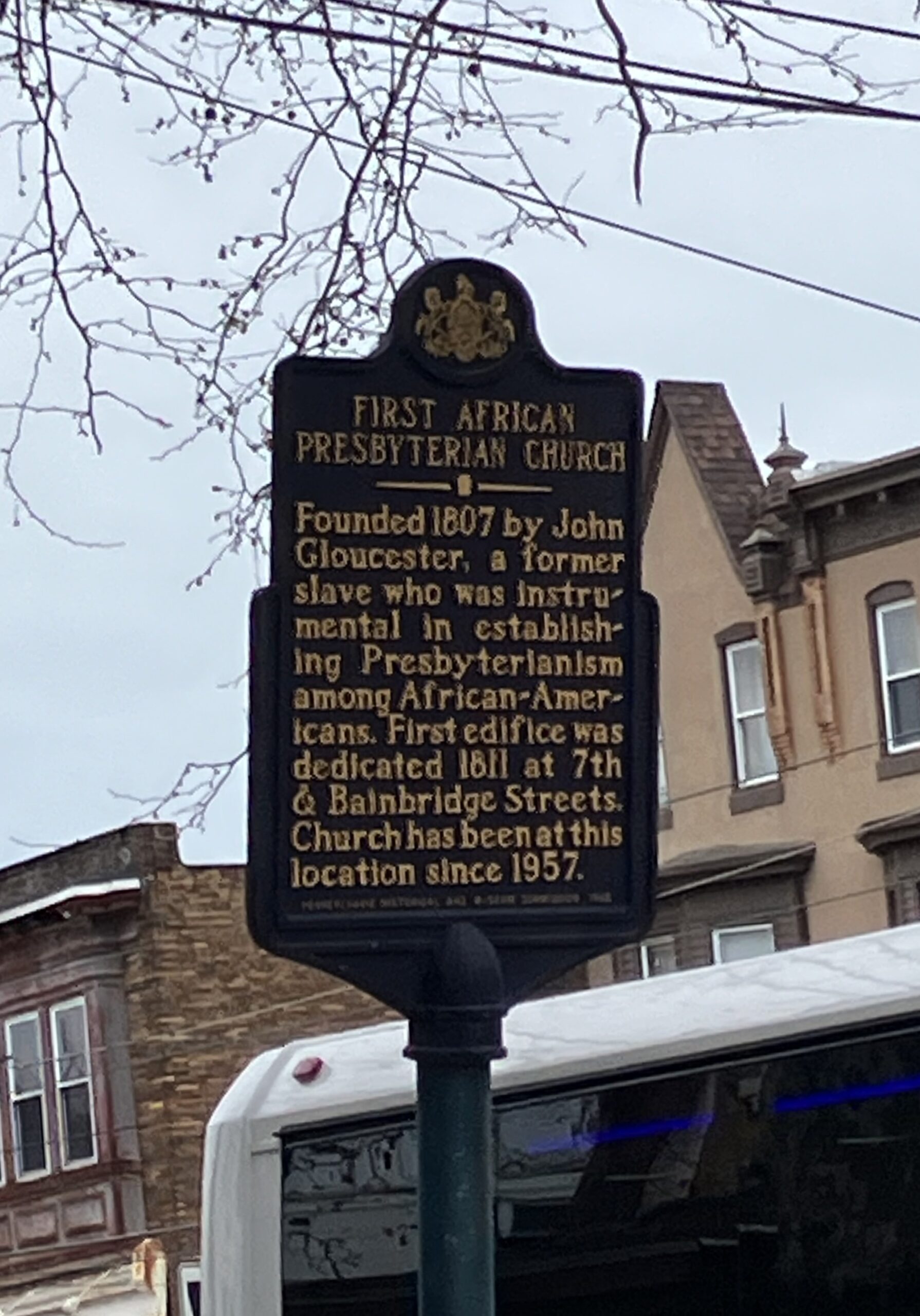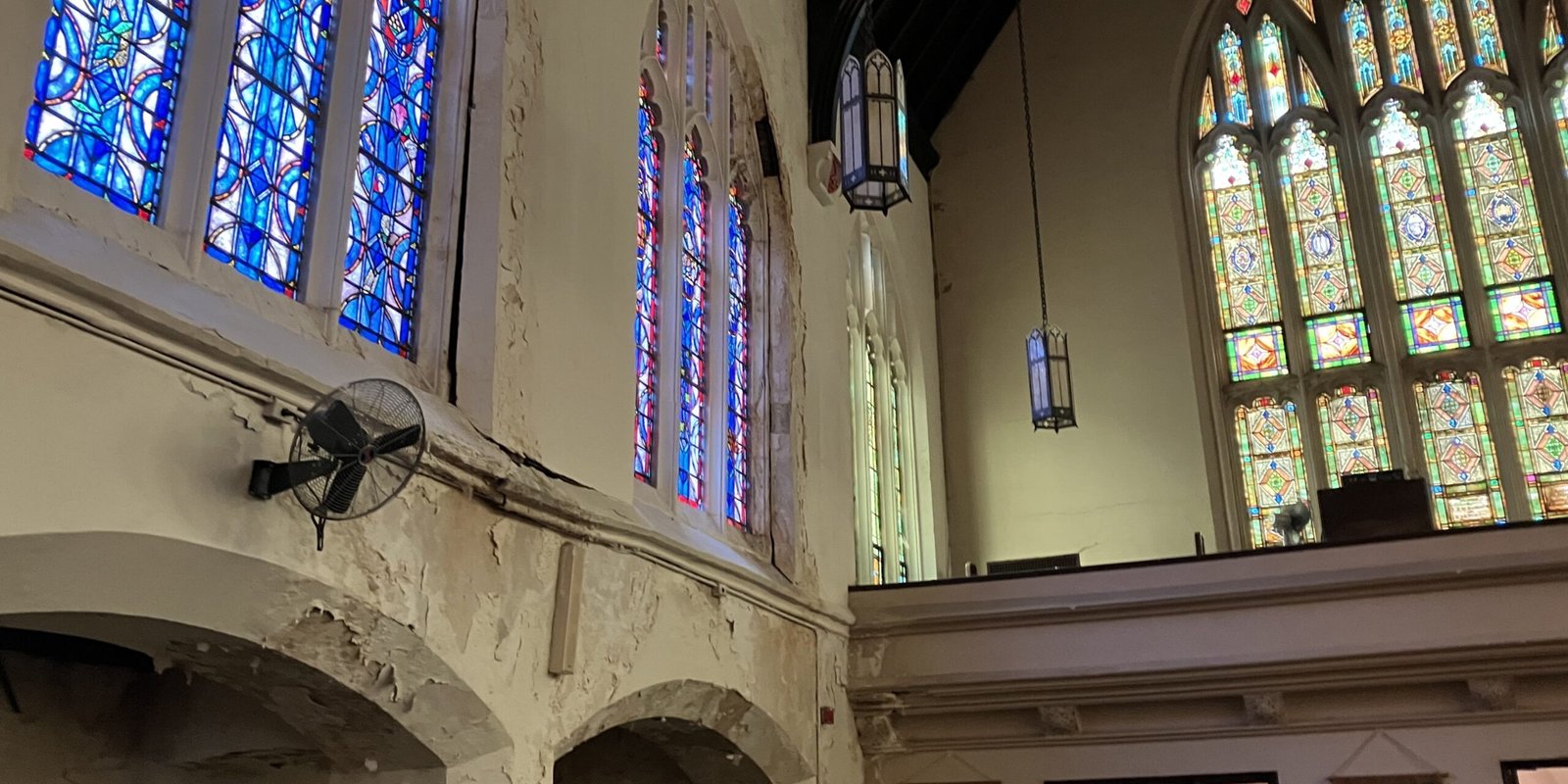Recently I attended a convening of amazing people who all care about religious buildings – what they mean for the people who worship in them, what they mean for the people and organizations that share them, and what they mean in the physical communities they often anchor.
Partners for Sacred Places, headquartered in Philadelphia, was celebrating 35 years of remarkable support for congregations of all sorts that seek to preserve and use their buildings for the good of their communities.
In addition to the usual roundtable discussions, we took field trips, visiting some of the places where Partners’ investments are making a difference. At New River Church, we saw an old sanctuary awaiting renovation and a community-informed vision for what it can become — as well as bright art-lined spaces that already reflect the emerging mission of this new congregation that was created with the merger of three historic Black Presbyterian churches. The brochure they handed us asserts that their aim is to develop a “comprehensive plan to restore and renovate the building to provide space for artists, educators, healthcare providers, grassroots organizations, and entrepreneurs” to support the vitality of their neighborhood.
Stewarding an aging building takes “purpose, passion, prudence, and partners.”
Theirs is a theology-driven mission, with dynamic leadership from a new pastor and committed lay leaders, and an energetic pursuit of a variety of resources for getting things done. They have what Bishop Daniel Edward Thomas, of Toledo, named at the convening as “purpose, passion, prudence, and partners.” And they have been willing to have slow, hard conversations about who they are and who they want to be.
Throughout the convening, we were reminded of both the necessity of such places and the challenges for congregations in aging buildings and fragile communities.

It is precisely such communities, of course, that can benefit from the connections to be found in a local congregation – connections to God, to friends, and to services that may range from healthcare to housing. These are places to make the collective voices of people heard, advocating for support for the causes they identify. As places of gathering and places of beauty, they are often seen as potential anchors for community revitalization.
Still, there are challenges – immense burdens of deferred repair and structures built long before anyone thought about accessibility, not to mention the climate-unfriendly character of such old buildings, to name a few.
These are places where the ancestors have walked, filled with objects that connect people with transcendence
These are also sacred places, and modification or moving or demolition means hard conversations about what to preserve and what can go. These are places where the ancestors have walked, filled with objects that connect people with transcendence.
All of that suggests a thorough inventory, looking at a congregation through all the ‘frames’ we discuss on this website. What are the aspects of your culture that deserve preservation, and what may be standing in the way? How will the needs and resources of your congregation’s neighborhood ecology affect what you do? What processes of decision-making and leadership will enable you to move forward together? How can you expand your imagination about the available resources? And, most of all, what does your theology call you to do?

